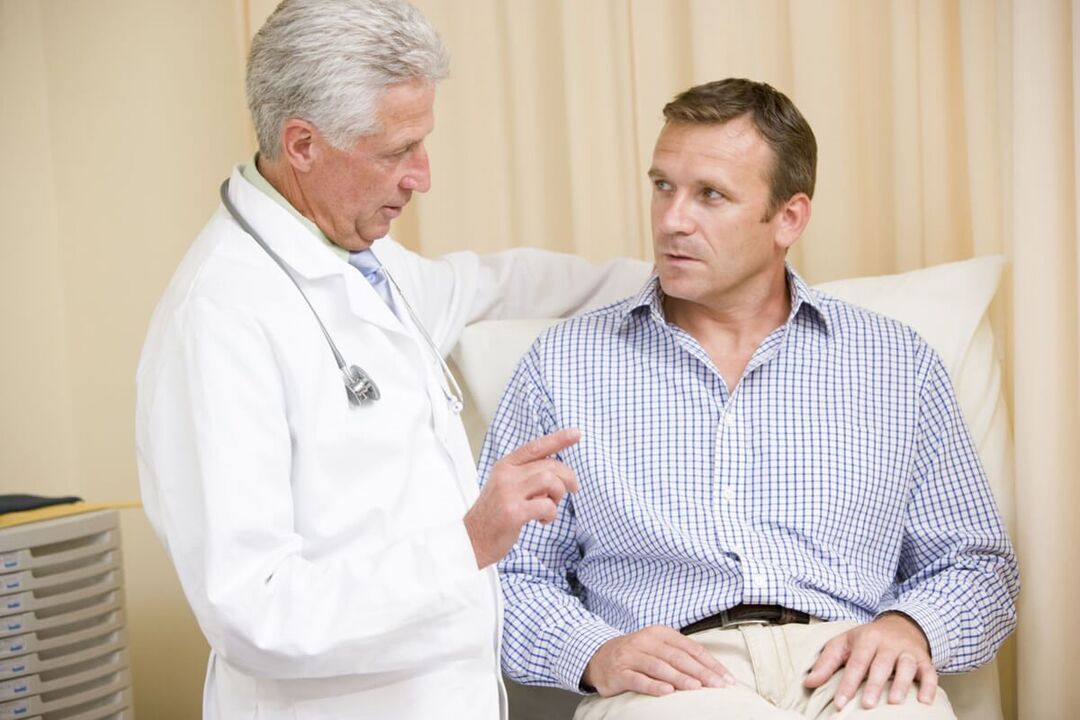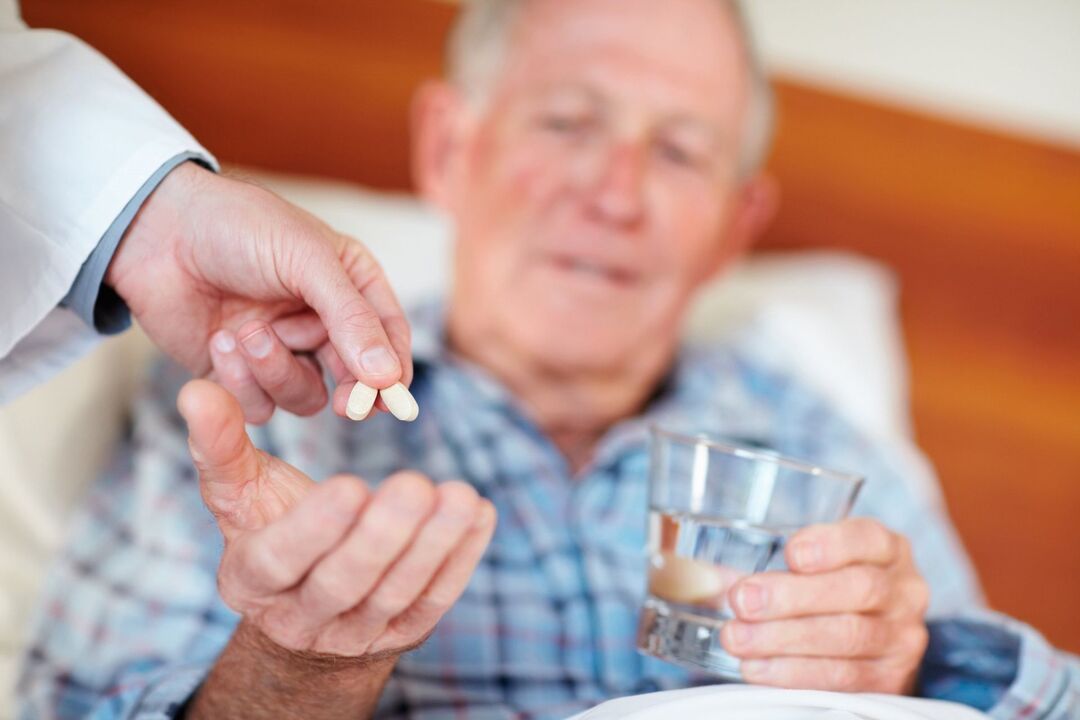
Prostatic adenoma and prostatitis are two diseases that cause real anxiety attacks in men. These "male" pathologies are not absolute analogues, although in both cases the prostate will be affected, you must take drugs for prostatitis and prostate adenoma, use other treatments and prescribe surgery to treat complications. However, when it comes to adenomas, they mean benign tumors, while prostatitis is an inflammatory process that occurs in the prostate.
These two diseases are mostly diagnosed in men aged 45 or 50, and many men mistakenly believe that adenoma is a complication of prostatitis. This misunderstanding is usually based on the similarity of symptoms-both pathologies are accompanied by dysuria and pain. There are some similarities and fundamental differences in treatment.
Principles of Disease Treatment
Consider the main treatment stages of prostate adenoma and prostatitis. In both cases, treatment should be comprehensive, which will make it more effective. Acute prostatitis in men can be cured by antibacterial therapy, the use of a wide range of drugs, anti-inflammatory drugs, and desensitizing drugs. If an abscess is suspected, it is prescribed to open the source of the purulent inflammatory process.
Drug therapy aims to stabilize the patient's condition by lowering body temperature, stopping inflammation, and returning the general condition to normal. The doctor confirmed the need to remove the abscess through rectal and instrumental examinations, and laboratory examinations. After the autopsy, a drainage tube was placed in the hospital to drain the pus. After the prostate is drained from the pus, the inflammatory process stops, the drainage is removed, and the wound will heal in about a week.
In the context of changes in daily life and diet, male chronic prostatitis requires longer treatment time. The main goal of treatment is to eliminate congestion. To do this, use:

- It takes two to eight weeks to take antibacterial drugs.
- It means to improve blood circulation.
- Prescriptions for non-steroidal anti-inflammatory drugs.
- Application of physical therapy methods-magnetic therapy and laser therapy. Ultrasound, reflexology and hydrotherapy are also recommended.
- Glandular massage.
Modern treatment methods guarantee the establishment of a sufficiently stable remission, the duration of which can be several years, and complete healing in the case of successful coincidence.
When prostate adenomas are detected in the initial stages of development, the most effective treatment is medication. Similar to the treatment of male prostatitis, physical therapy and diet therapy are prescribed, and lifestyle adjustments are recommended. The purpose of taking drugs is to slow down the growth of the glands and reduce their size to reduce the severity of violations during urination. For this they use:
- Antimicrobial agent.
- Drugs that correct hormone metabolism make your glands smaller.
- In order to stabilize the urination process, it is recommended to use drugs to improve the tension of the prostate and urethra.
- Plant capsules have difficulties due to the fact that their functions are not yet fully understood.
- Prescribes photodynamic therapy.
- Ozone therapy, exercise therapy
In both cases, after consulting the attending doctor, it is allowed to use folk recipes as an additional remedy. In the context of the victim's refusal to take drugs, drugs used to treat prostatitis and adenomas will play the best role.
Application of antibiotics in prostatitis and glandular adenoma formation
Consider what medicines you need to take to treat prostatitis and prostate adenoma, and start with antibacterial drugs. Antibiotic drugs for prostate adenomas are only used when a bacterial infection joins the disease, which is considered to be very common. Antibacterial drugs for the treatment of prostatitis are one of the main points of treatment. In both cases, the following can be assigned:
- Penicillin drugs. They come in the form of tablets, injections and oral suspensions.
- Tetracycline substances.
- cephalosporin. Essential medicine for prostatitis. They are prescribed when inflammation is caused by Gram-positive or Gram-negative bacteria, anaerobic pathogens. The substance should be administered parenterally.
- Fluoroquinolones. They are prescribed in the presence of Ureaplasma urealyticum, Chlamydia, Gardnerella, Staphylococcus or Streptococcus pathogens, Escherichia coli or Mycoplasma.
- Macrolide group. The advantage of funds is that they have low toxicity and they can accumulate in the prostate. The drug is produced in the form of tablets or solutions.
- Aminoglycosides. This is a good choice if the causative agent of inflammation is not identified or there are several of them.
The use of antibacterial drugs to treat these diseases can eliminate many negative symptoms, but they are accompanied by side effects. In most cases, this is the destruction of the digestive system and the formation of ecological disorders.
Inhibitor and blocker treatment
In the treatment of prostatitis and prostate adenoma, α1-Adrenergic blockers and inhibitors. The first one has a relaxing effect on the muscle tissue of the prostate, so it can quickly eliminate muscle spasms and normalize the urination process. 85% of the urination process is disturbed. In addition, such drugs can cause a significant drop in blood pressure, which should be taken into consideration when prescribing.
For prostate adenomas, drugs include 5-α reductase inhibitors. These funds are most commonly used because they effectively prevent the development of pathology, help reduce the size of the prostate, and help normalize the urinary process. Inhibitors are very effective remedies, because after a course of treatment, more than 50% of victims do not require surgical intervention. The effect of combination therapy is better, and the results obtained are more stable than single therapy.
Preparation for prostate pain and inflammation
The treatment of the pathology under consideration includes the elimination of pain and the elimination of inflammatory processes. The pain is particularly unbearable during the worsening of the course; antispasmodics can help relieve the pain. They help relax the smooth muscles of the prostate and help improve blood circulation.
The inflammatory process in the prostate is characteristic of prostatitis. If you neglect treatment, they will progress with pain, impaired erectile function, and urinary retention due to pressure on the urinary tube. Usually, when recommending how to treat prostatitis, the doctor will prescribe some drugs to relieve the inflammation, which in many cases can eliminate the negative symptoms.
An inexpensive and effective prostatitis drug can also be used, which is an anti-inflammatory, non-steroidal, and antipyretic agent. Any medicine should be taken strictly in accordance with the doctor's instructions and under his direct supervision.
Herbal preparations for treatment
Adenoma medicine with significant positive effects-herbal medicine, among which extracts from Permikson palm stand out.
can use:
- A drug that has a positive effect on system metabolism is also a strengthening substance. It contains sandalwood, sage, ginseng, ginger, cloves, calamus and other ingredients.
- A medicine used as a dietary supplement, containing more than 40 ingredients, most of which are herbs.
- The drug is used as a preservative, analgesic and immunomodulator with antipyretic and anti-inflammatory properties. The product contains burdock root, elm and ash bark, juniper berries and bearberry leaves.
This is not a complete overview of the drugs that can be used to treat prostatitis and prostate adenoma. However, they should be prescribed by a doctor, so that unpleasant and dangerous consequences can be avoided.
























